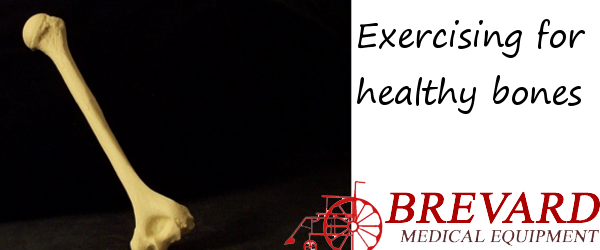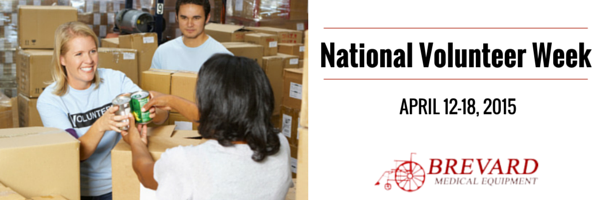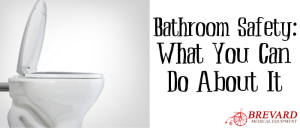May is Osteoporosis Awareness Month, but at Brevard Medical Equipment, we’re aware of it all year-round! Many of our customers live with osteoporosis, and because of that, we provide a number of items that make their day-to-day life easier.
But, our customers are not alone. Did you know that osteoporosis affects 20% of Americans over the age of 50? Of them, Caucasian women are the most susceptible to the disease.
In last week’s blog, we talked about some daily things you can add to your diet to help you grow healthy bones. Today, we want to talk about some daily exercises you can do that will help if you have thinning bones—although, we will say to ask your doctor before you start any new exercise regimen.
• Yoga—Studies suggest that regular yoga workouts are good for osteoporosis, especially in the places most vulnerable to fracture. Its movements don’t make impact on the bones, but still stress them enough to give them a good workout. However, some poses you should shy away from, especially those that require deep backbends.
• Walking—Do this 45 minutes a day, five days a week, and you could a dramatic reduction in your hip fractures.
• Dancing—Who doesn’t enjoy tapping their feet and moving to a beat? As long as you’re not stomping, leaping or doing something else that’s high-impact, dancing can be great for your bones.
Remember, while exercise is good for you, when you have brittle bones, some exercises should be avoided—especially those that carry a high risk of falls or that are high-impact. That rules out skiing and jumping jacks.
If you do have osteoporosis, remember, your mobility doesn’t have to be limited. At Brevard Medical Equipment, we carry a number of products in our online catalog that can make living with osteoporosis easier.













Recent Comments